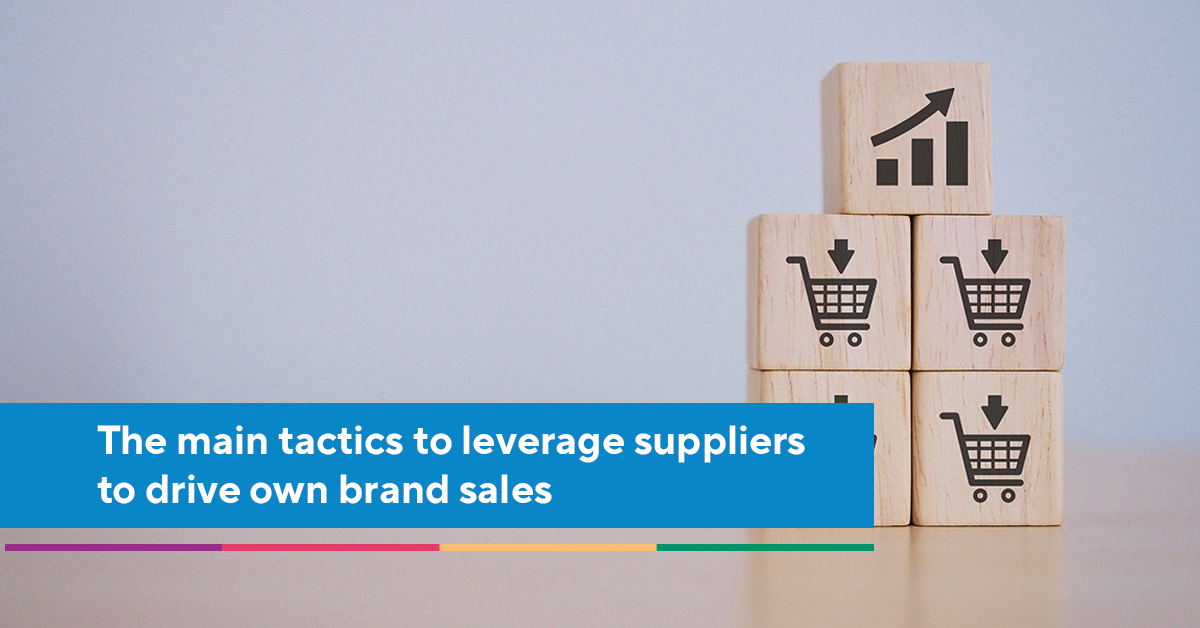Now more than ever, with pressures on cost, supply chains and sustainability, I believe that retailers can benefit from more time looking at ways to leverage their suppliers’ passion and expertise to make their products more compelling (rather than squeezing prices).
In this post, I’d like to share three ways that retailers can do more of that.
The power behind this approach is that all suppliers are unique. They each have their own story about why they love their product and what they believe makes it special.
Therefore, my first tip is:
#1 Prominently feature your supplier and their story on point of sale (POS) materials
Supermarket aisles offer a dizzying amount of choice. A multitude of packaging colours, fonts and slogans compete with each other to be heard – “Pick me! Pick me!”
But when people walk down the bread aisles, they aren’t just looking for a loaf. Subconsciously they are looking to feel connected to a particular brand. And this is why national brands can end up dominating the basket – they invest in advertising to make you feel a connection with their brand.
Own Brand advertising is typically not focused on specific products. This means your Point-of-Sale (POS) merchandising needs to work much harder than its national brand equivalent.
A great way to maximise the chances of your customers feeling a connection with your private brand products is by telling your suppliers’ stories – Who are they? Where are they from? What do they look like? What do they love about their product? How would they recommend you use their product? This hasn’t been the traditional approach in Own Brands where the supplier is often hidden behind the store brand but Own Brands that have been happy to share the back story have been able to build brand value. Noticeable examples are Sainsbury’s farmers featured on pack and the M&S TV campaign visiting artisan suppliers.
All of these answers build a connection through the supplier’s authenticity and passion. This maximises the chance that customers will choose your product over what could be perceived as a ‘faceless, big brand’.
We do see this most prominently in produce where some retailers name the farmer, but isn’t there an opportunity to apply this more broadly?
#2 Let customers scan QR codes on pack to learn more about the supplier
Don’t let your suppliers’ stories be limited by the physical. Shelf space does come at a premium but there are clever ways to circumvent this. Add a QR code or NFC (near-field communication) chip to the packaging or POS material to add another dimension. Research showed that 48% of millennials feel more loyal to a brand that provides interesting experiences of which 42% said interactivity was important to them in stores.
Upon scanning this could take your customers to your website, the supplier’s social media page or even a video. The emergence of SmartLabel™ has helped this to become more prevalent and the GS1 Sunrise to new POS codes will only expand on this potential.
#3 Feature your supplier’s story on your website
By expanding your online grocery shopping site to include supplier information, you can create a completely unique shopping experience. Create a landing page per supplier which consolidates their products, videos and recipes in one place. Give customers the ability to search for products by supplier or region.
This is not just the online alternative to #2 because it allows a different way to find and explore products and recipe ideas. It can also be the ‘landing page’ for the QR codes in #2 and a way to engage customers with the online experience.
Be bold! Allow customers to interact with the supplier and the content that represents them. “Have you made Mary the cheese producer’s homemade lasagne recipe? Share your picture here!” As with any social interaction, you have the added benefit of empowering your customers to market your products and content on your behalf via their very own social network.
It’s about mindset, not magic
None of these tactics use any technology that is not readily available or not already being used by your organisation. Indeed, all are being employed by Own Brands but it is the exception, not the role. There is a great opportunity to engage. It’s simply a case of thinking of your suppliers as an asset and exploring how to leverage them.
A few years ago we worked with Waitrose – using Waitrose’s Supply Pilot Platform – to engage suppliers in the on-shelf story with significant results. Sales increase for those participating increase by 25% plus a significant ‘halo effect’ for other sales in store.
I hope it shows that leveraging supplier stories could be worth millions to your private brand.



